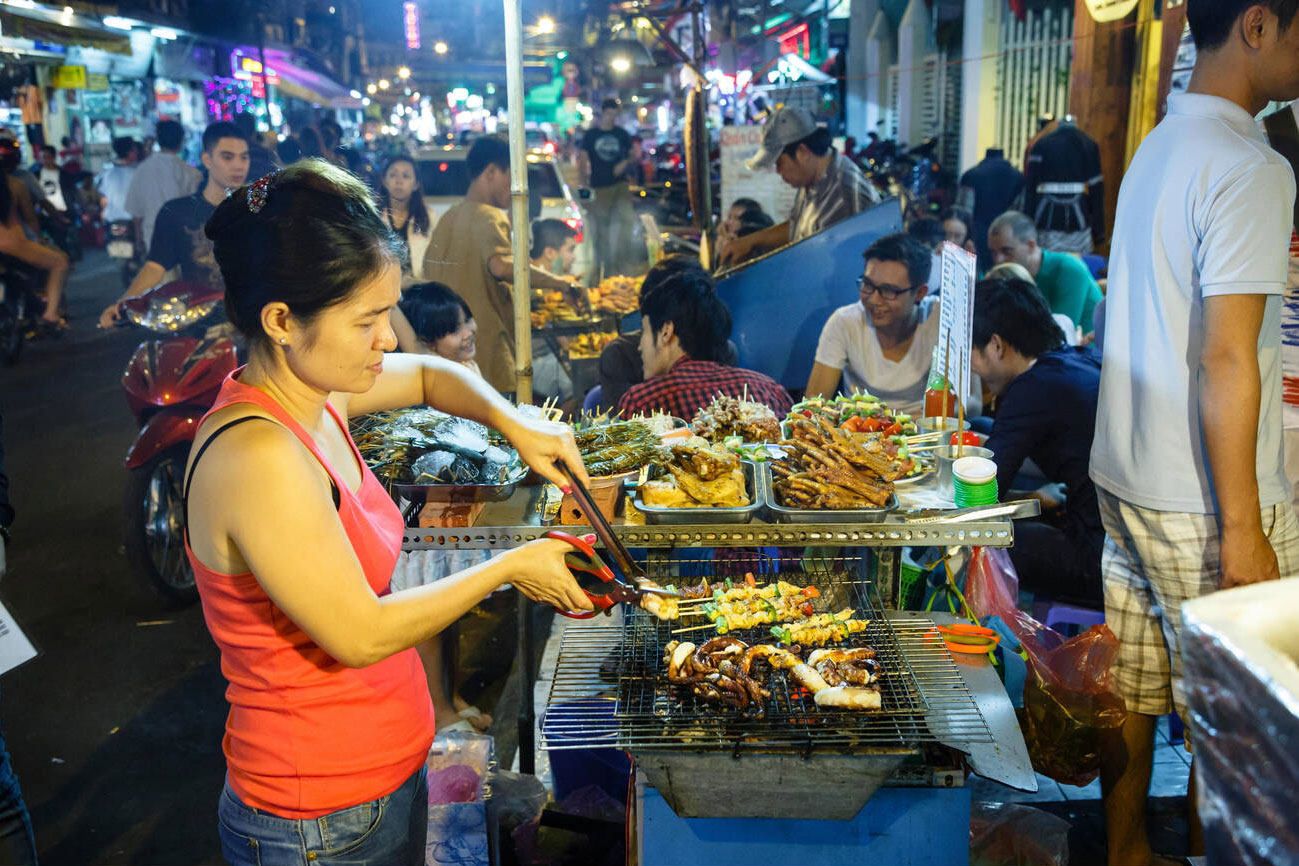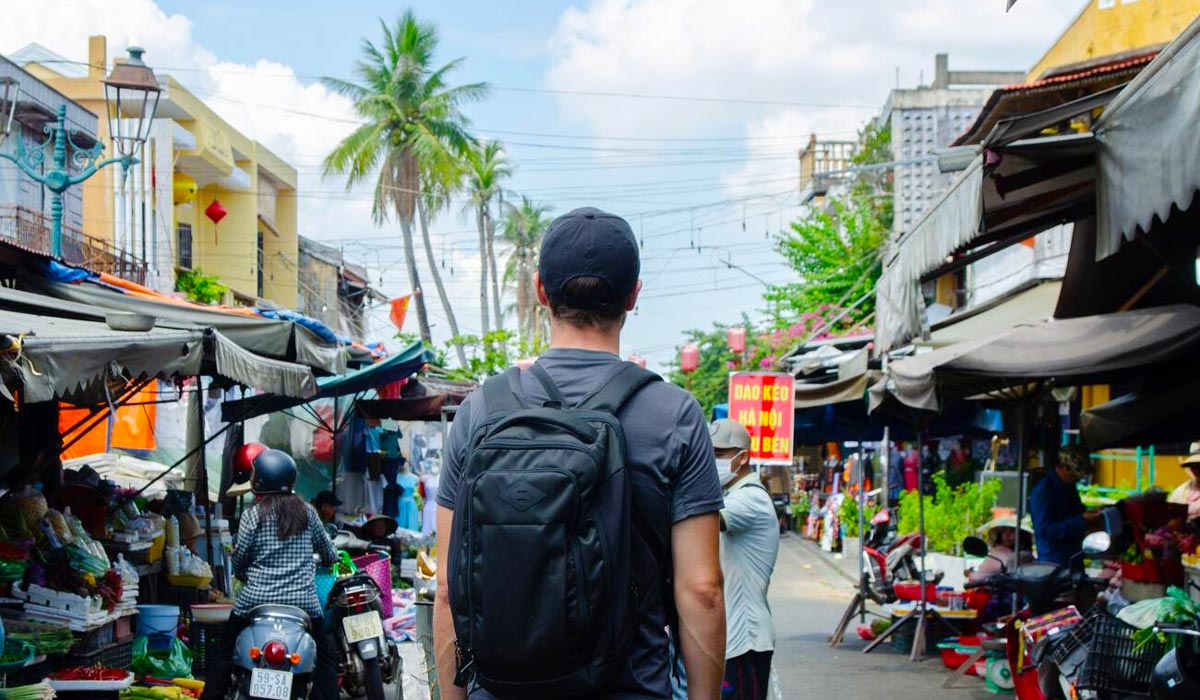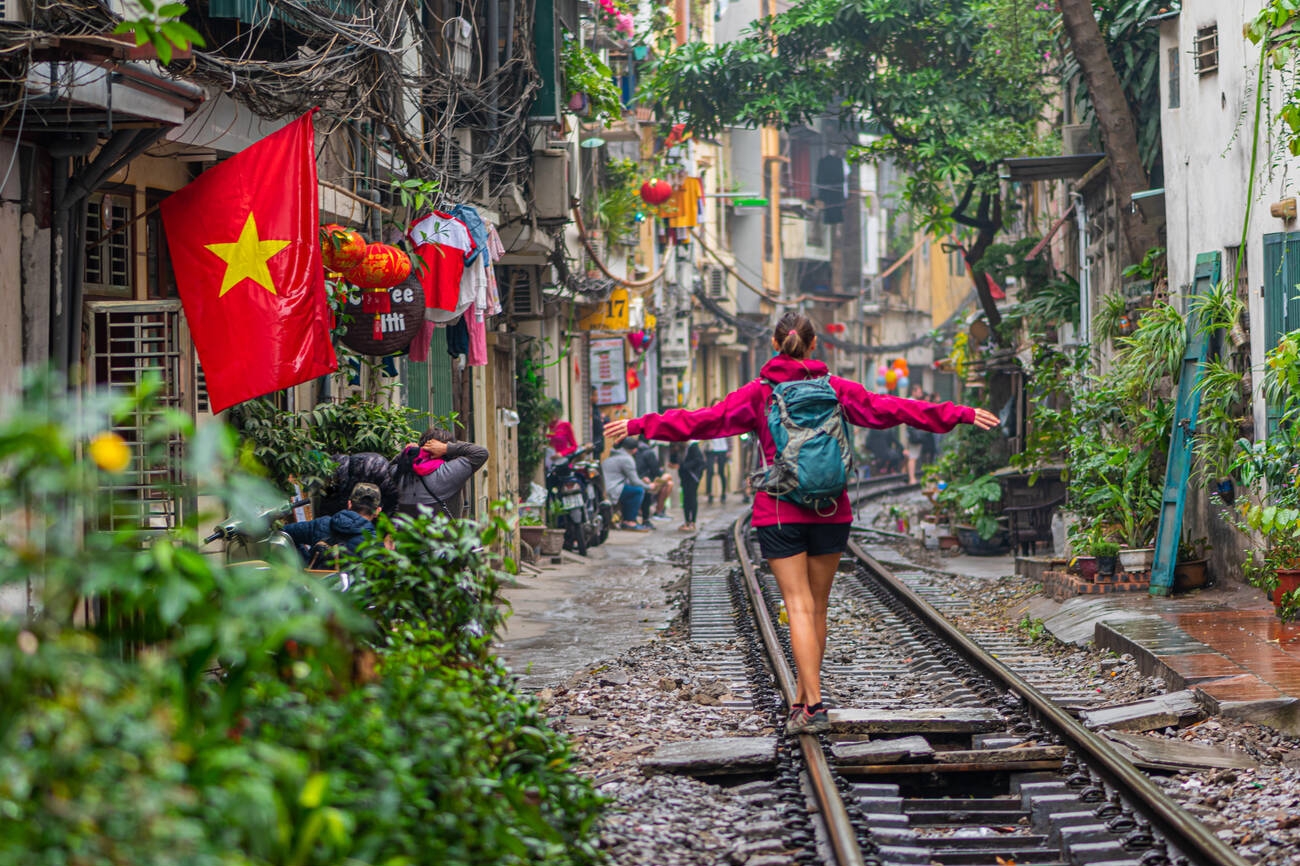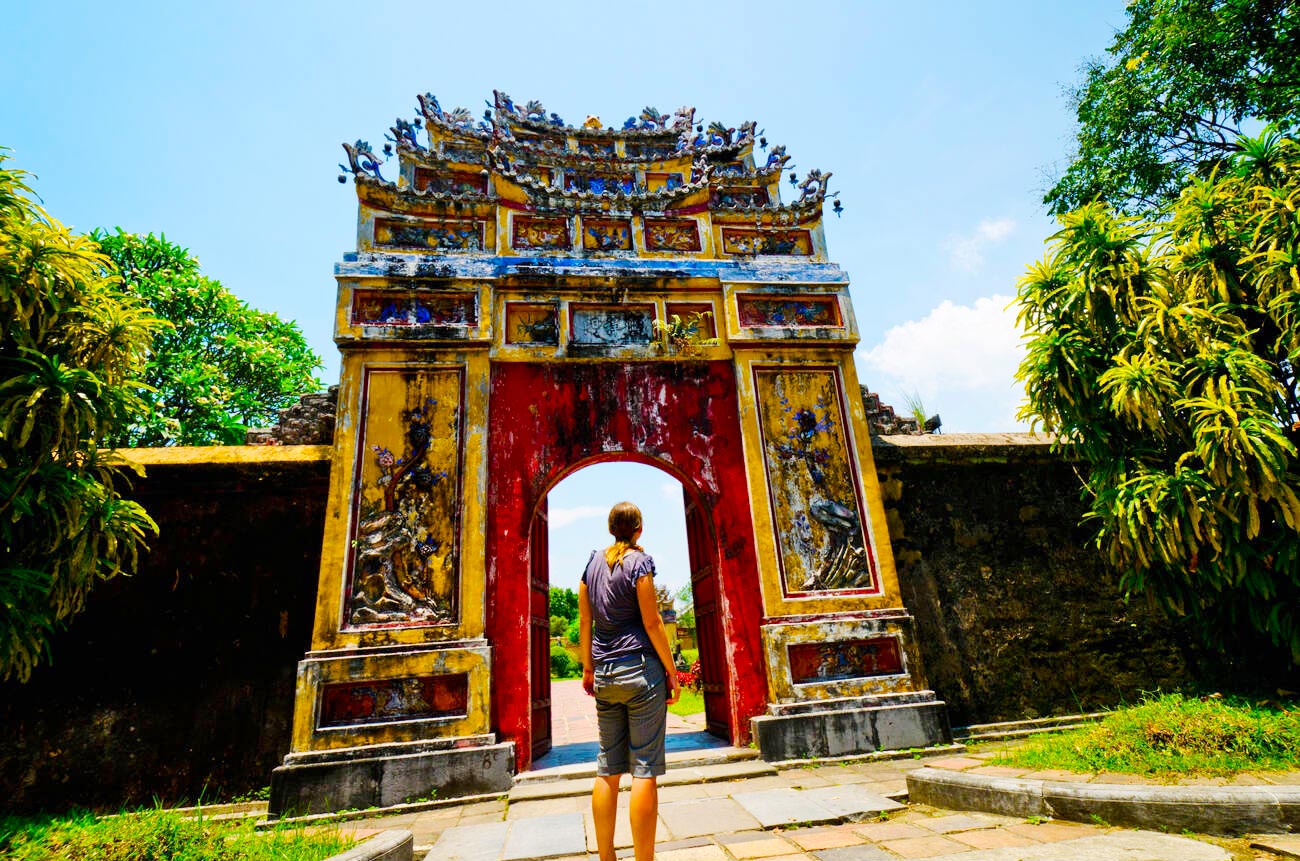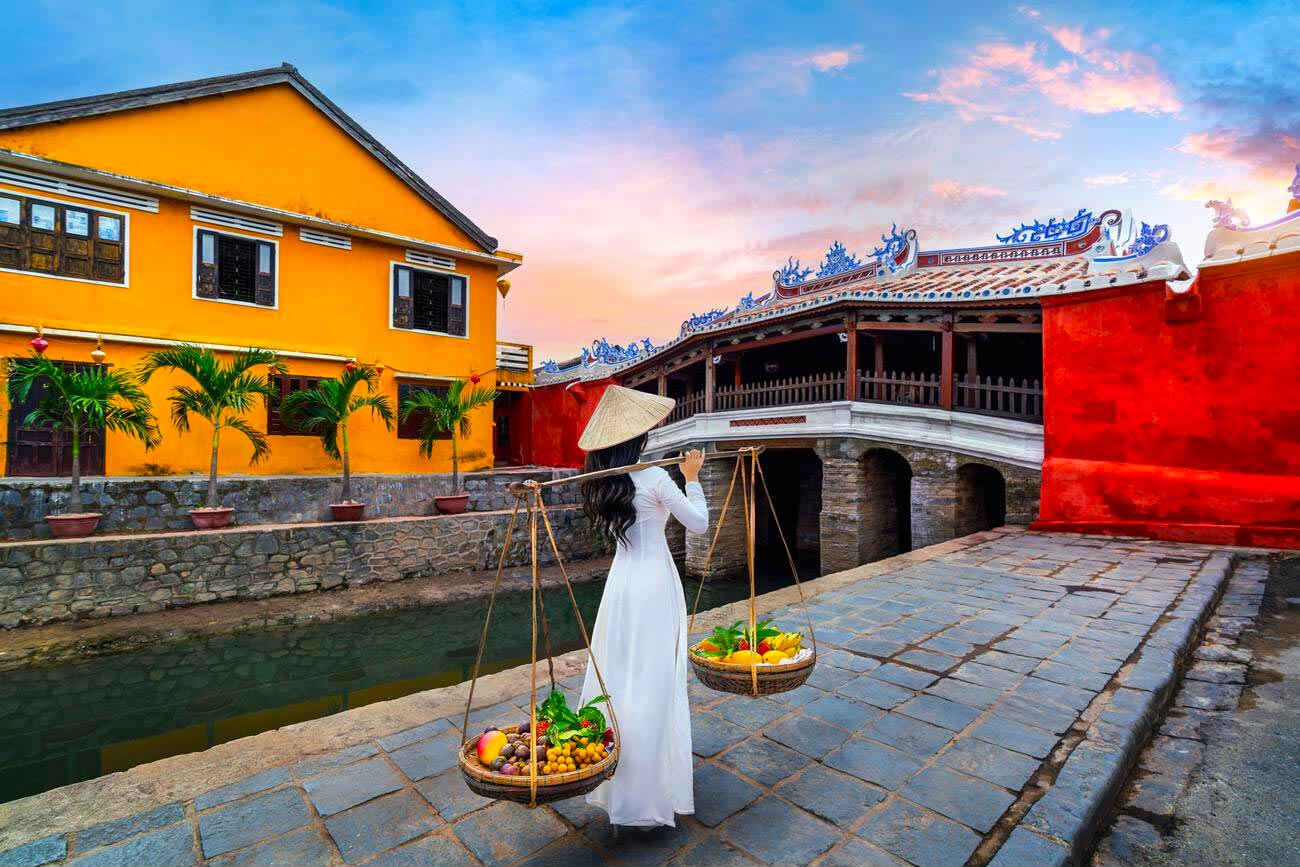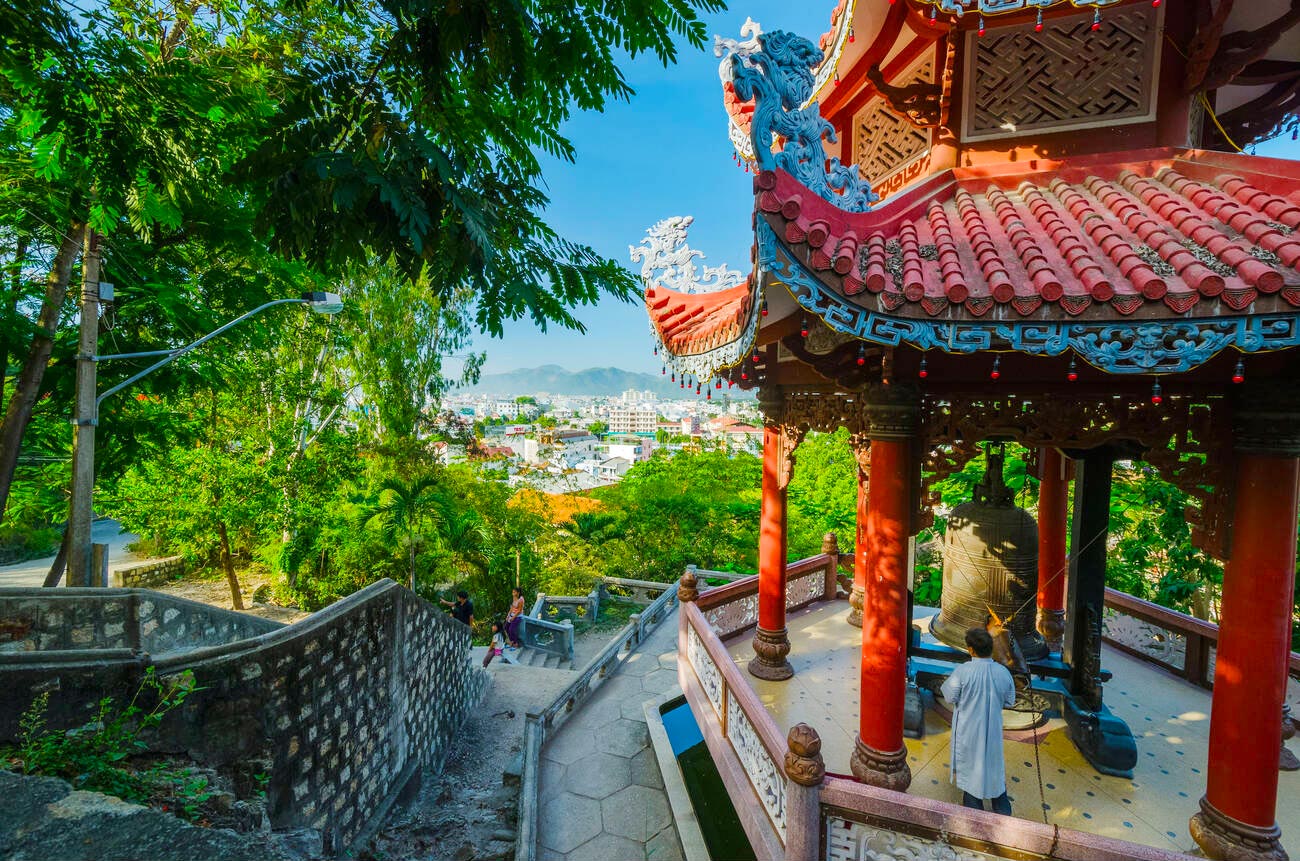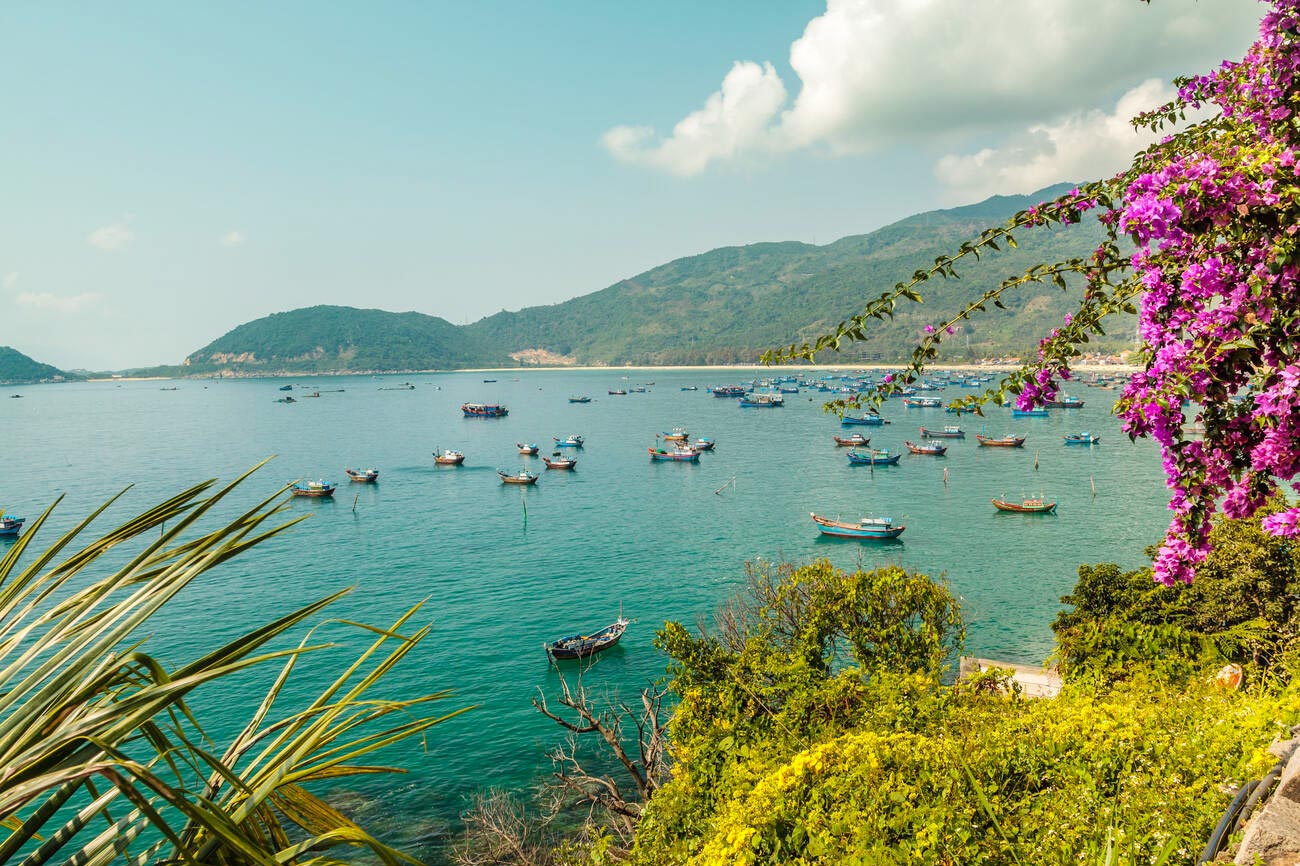Summary
- The article highlights Saigon’s dynamic street food culture, shaped by diverse historical and cultural influences.
- It covers must-try dishes like phở, bánh mì, and bánh xèo, reflecting Saigon’s vibrant fusion cuisine.
- Readers learn practical tips, from handling currency and ordering food to navigating the city’s bustling sidewalks.
- It discusses both classic street delicacies and modern fusion creations, illustrating Saigon’s evolving food scene.
- Emphasis is placed on embracing local customs, ethical practices, and community connections in every culinary encounter.
Saigon Street Food is a remarkable tapestry of flavors, colors, and cultural heritage that captivates travelers from around the globe. Also known as Ho Chi Minh City, Saigon is Vietnam’s largest metropolis, where past and present seamlessly converge. This dynamic city thrives on its energy—towering skyscrapers and modern malls mingle with age-old temples and hidden alleyways. For countless visitors, though, it is the street food scene that truly embodies Saigon’s spirit. Whether you’re meandering through bustling night markets or ducking into an unassuming stall, the city’s culinary wonders never fail to amaze.
This in-depth guide will explore every facet of Saigon’s legendary street food culture. From its vibrant history and cultural significance to must-try dishes, local etiquette, and insider travel tips, prepare to dive into a world of irresistible aromas and distinctive flavors. By the end, you will be well-equipped to navigate the narrow lanes, savor iconic bites, and make the most of your gastronomic adventure in Vietnam’s southern heart.
The Vibrant Culture of Saigon Street Food
Few things capture the spirit of a place, such as its food, and in Saigon, street food stands out as a reflection of the city’s soul. Roaming through the frenetic streets, you can find vendors perched on tiny stools dishing out piping-hot bowls of phở (a beloved noodle soup), chefs deftly flipping bánh xèo (crispy rice pancakes) on sizzling grills, and fruit sellers expertly cutting tropical produce for refreshing juices. This constant swirl of activity is emblematic of the metropolis—fast-paced, adventurous, and deeply rooted in community.
For residents, street food stalls often function as informal gathering places. Locals catch up with friends, discuss the latest news, and exchange stories over comforting dishes. In this sense, Saigon’s street food culture transcends mere eating; it fosters bonds and creates communal experiences. You might notice that many street vendors have cultivated loyal patrons for decades, with each new generation frequenting the same spots their parents and grandparents once did.
Another reason street food is so integral to Saigon’s identity is its astonishing diversity. Influences from Chinese, French, Khmer, and other Southeast Asian cuisines have shaped local fare over centuries. This amalgamation of tastes is evident in dishes like bánh mì, a crusty baguette sandwich stuffed with pickled vegetables, savory meats, and aromatic herbs. It is undeniably Vietnamese yet carries an echo of French culinary tradition. Such cultural layering permeates nearly every offering you’ll come across in Saigon.
Must-Try Delicacies in Saigon
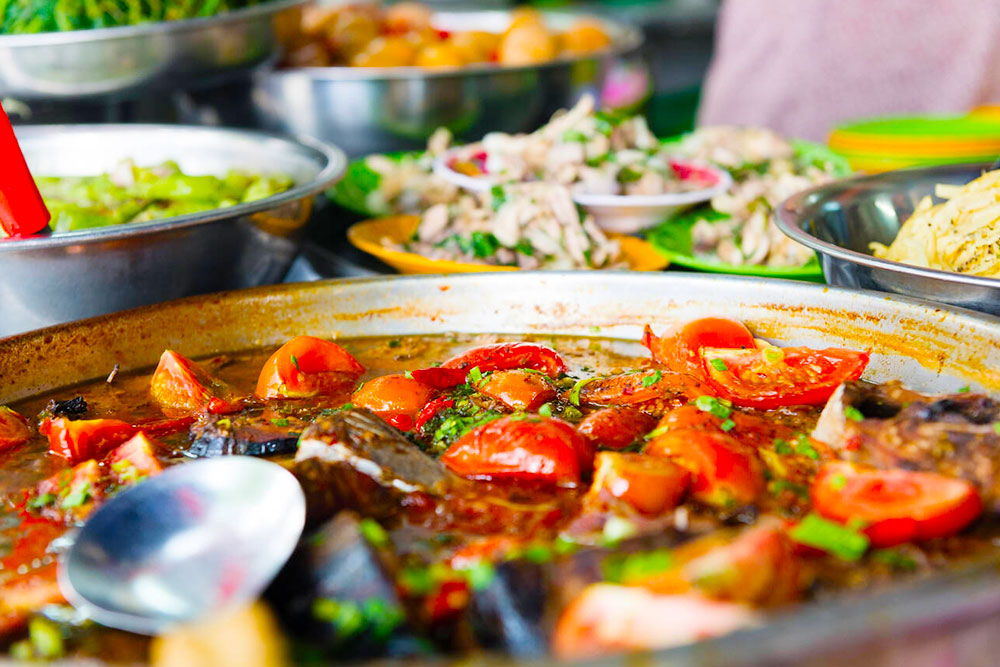
Nothing compares to the excitement of tasting iconic street food dishes in the city that perfected them. Below, we delve into some must-try specialties that exemplify Saigon’s gastronomic allure.
1- Phở (Vietnam’s Signature Noodle Soup)
While phở is enjoyed nationwide, Saigonese phở often has a sweeter, more aromatic broth than its northern counterpart. Served with rice noodles, thin slices of beef or chicken, and a garnish of bean sprouts and herbs, phở epitomizes comforting simplicity. Lime wedges, sliced chili, and hoisin sauce are typically available, allowing you to tailor each bowl to your taste. In Saigon, you’ll find phở at dawn, noon, or late into the night, making it a perfect meal anytime.
- Bánh Mì (Vietnamese Baguette Sandwich)
If there is one Vietnamese dish that has taken the world by storm, it is bánh mì. This French-inspired baguette is crisp on the outside and airy on the inside. Vendors stuff it with a variety of fillings, including chả lụa (Vietnamese pork sausage), barbecued pork, shredded chicken, pickled carrots, cucumbers, cilantro, and a smear of pâté or mayonnaise. Portable and budget-friendly, bánh mì is an ideal on-the-go snack for busy Saigon mornings.
- Bánh Xèo (Sizzling Rice Pancake)
A mouthwatering example of Vietnamese creativity, bánh xèo is a bright yellow, crispy rice pancake filled with shrimp, pork belly, bean sprouts, and onions. The name translates to “sizzling cake,” referencing the crackling sound when a batter hits the hot pan. Traditionally, you tear a piece of bánh xèo, wrap it in lettuce or mustard leaves along with fresh herbs, then dip it into nước chấm (a tangy fish sauce-based dip). Combining textures and flavors—crispy, savory, and zesty—is a revelation.
- Cơm Tấm (Broken Rice)
Popular among locals for breakfast or lunch, cơm tấm is made from fractured rice grains, once considered inferior. Today, it’s revered as a distinct Saigon staple. Vendors typically top the rice with grilled pork chops (sườn nướng), shredded pork skin, steamed egg loaf (chả trứng), and a drizzle of sweet-salty fish sauce. Crisp vegetables and herbs on the side complete the dish, giving it a satisfying balance of tastes and textures.
- Bún Thịt Nướng (Grilled Pork Vermicelli)
Another noodle dish that stands out is bún thịt nướng, featuring marinated, grilled pork served over a bed of fresh rice vermicelli. Accompanied by chopped lettuce, herbs, pickled carrots, and crushed peanuts, all drizzled with a sweet and tangy fish sauce, it’s both light and flavorful. Some stalls add spring rolls to the bowl for a bit of extra indulgence, making it a more filling meal.
- Gỏi Cuốn (Fresh Spring Rolls)
Unlike the deep-fried varieties, gỏi cuốn are translucent rice paper rolls filled with shrimp, pork, noodles, and lettuce or herbs. Served cool, they are incredibly refreshing in Saigon’s tropical climate. Dip them in tương xào (a peanut hoisin sauce) or the classic fish sauce for a subtly sweet, savory delight.
- Bánh Tráng Nướng (Vietnamese Pizza)
Sometimes called “Vietnamese pizza,” bánh tráng nướng is a relatively modern street snack. Vendors spread toppings like minced pork, quail eggs, dried shrimp, cheese, and scallions over a thin sheet of rice paper, then grill it until it becomes crispy. The result is a delightful fusion of textures that resonates with traditional and contemporary palates.
- Other Regional Specialties
Beyond these icons, Saigon’s street food landscape also includes lesser-known gems like bột chiên (fried rice flour cakes with egg), bánh khọt (mini crispy pancakes topped with shrimp), and hủ tiếu (a hearty pork-based noodle soup). Each neighborhood tends to have its specialty, inviting adventurous eaters to explore far and wide.
Savoring Desserts and Sweet Treats
No exploration of Saigon’s street food scene would be complete without indulging in a few sweet treats. Vietnam has an extensive tradition of desserts, many of which revolve around rice, coconut milk, and tropical fruits.
- Chè (Sweet Soup): Chè encompasses a family of sweet soups and puddings that can be served hot or cold. Common variations include chè đậu đỏ (red bean soup), chè ba màu (three-color dessert with beans and jelly), and chè chuối (banana coconut pudding). Often topped with crushed ice, these desserts provide a refreshing, sugary finish to a street food meal.
- Bánh Flan (Crème Caramel): Another remnant of French influence, bánh flan is a silky custard topped with caramel sauce. Street vendors sometimes serve it with crushed ice and strong black coffee, melding French dessert tradition with a Vietnamese caffeine kick.
- Chuối Nếp Nướng (Grilled Banana Wrapped in Sticky Rice): A local favorite, this dessert features a sweet banana encased in sticky rice, which is then grilled until it achieves a slightly charred, caramelized exterior. Typically, it’s served drizzled with coconut cream sauce and sprinkled with toasted sesame seeds. The combination of smoky, sweet, and creamy elements is utterly comforting.
- Exotic Fruits and Juices: Saigon’s fruit selection is abundant year-round, thanks to Vietnam's tropical climate. Dragon fruit, mango, papaya, and jackfruit are widely available at markets and street stalls. You might also encounter lesser-known varieties like sầu riêng (durian) or măng cụt (mangosteen). If you’re feeling adventurous, sample fresh-squeezed sugarcane juice (nước mía), which is both energizing and deliciously sweet.
Etiquette, Tips, and Local Secrets
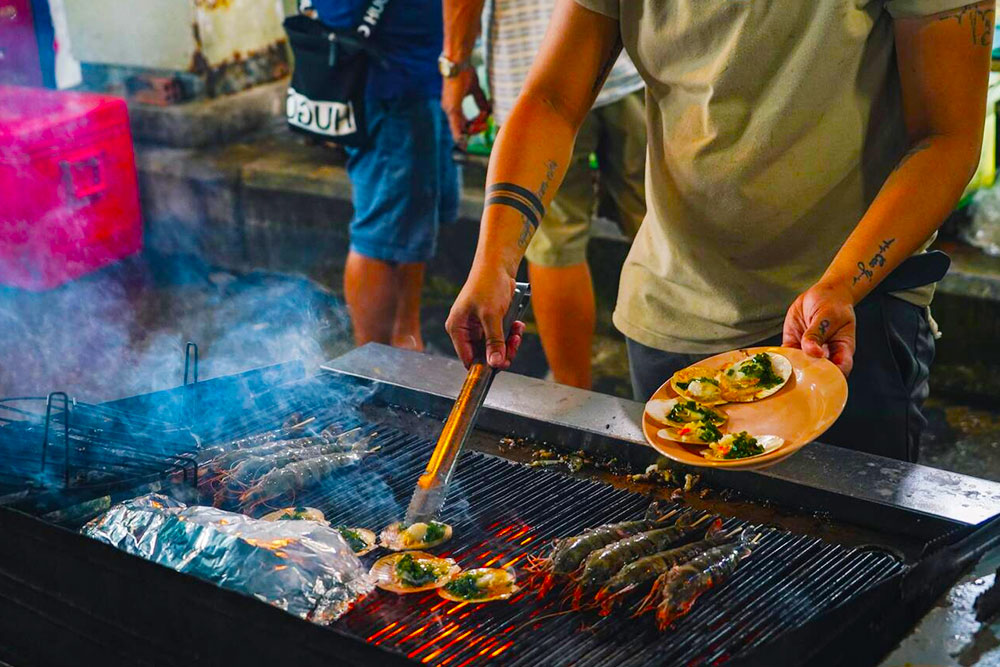
While Saigon’s street food scene is famously inclusive, a few pointers can enhance your dining experience.
Navigating Hygiene and Cleanliness
Before diving into the first stall, observe how the vendor handles food. Are they wearing gloves or using separate utensils for raw and cooked items? Is the dining area relatively tidy? Also, look for stalls frequented by locals—high turnover generally indicates fresh ingredients and a bustling atmosphere signals trust in the vendor’s quality.
How to Order
Street food stalls can be chaotic, especially during peak hours. If you’re unsure what to do, watch how locals order. Sometimes, you wait for a seat; other times, you simply order from the vendor and grab a plastic stool. Most vendors appreciate a friendly smile or greeting. Attempting a few words in Vietnamese, like “Xin chào” (hello) or “Cảm ơn” (thank you), often goes a long way.
Dealing with Traffic and Seating
Sidewalks in Saigon are often shared by pedestrians, food stalls, and motorbikes. You might have to weave through traffic or sit inches away from the passing crowd. Embrace it as part of the city’s charm. Many places provide tiny stools and low tables. If you’re tall or not used to such seating, be prepared for a bit of a balancing act!
Bartering and Payment
Generally, street food prices in Saigon are fixed and posted, though they can vary slightly depending on location. If there is no sign, politely ask, “Bao nhiêu tiền?” (How much?) before ordering to avoid misunderstandings.
Timing Your Visits
Morning is prime time for phở, bánh mì, and coffee stalls, while grills and seafood joints dominate evenings. Many vendors also remain open late at night, catering to Saigon’s nocturnal vibe. Planning your food-hopping by daypart lets you taste the city’s full culinary spectrum.
Where to Experience the Best of Saigon’s Street Food
While incredible bites can be found throughout the city, a few areas stand out for their vibrant street food culture.
1. Bến Thành Market Area
One of the most famous landmarks in Saigon, Bến Thành Market, encapsulates the city’s dynamic energy. Inside the market, you’ll find countless stalls selling everything from phở and bún bò Huế (spicy beef noodle soup) to tropical fruits and local coffee beans. In the evening, vendors set up outside the market, transforming the surrounding streets into a bustling night bazaar where you can sample bánh xèo, grilled seafood, and more.
2. District 1’s Side Alleys
District 1 is the city’s commercial heart, dotted with upscale restaurants and shopping malls. Yet, some of Saigon’s most authentic street food experiences are tucked away in its narrow side alleys. Places like Hem 177 Ly Tu Trong or Hem 18A Nguyen Thi Minh Khai are famed for quick, tasty bites. The contrast between modern glass skyscrapers and old-school carts side by side highlights the city’s unique blend of tradition and progress.
3. District 4’s Seafood Stalls
District 4, separated from District 1 by the Bến Nghé Canal, has earned a reputation as a seafood lover’s paradise. The area’s street vendors and humble eateries serve grilled clams, snails, prawns, and shellfish prepared with chili, garlic, cheese sauces, or lemongrass. Often, your meal is accompanied by a cold local beer—perfect for unwinding after a long day.
4. Chợ Lớn (Saigon’s Chinatown)
For those intrigued by Chinese-Vietnamese fusion, Chợ Lớn is an essential stop. This expansive area teems with dim sum parlors, rice noodle soups, roast duck stands, and Chinese-style pastries. The architecture and signage lend the district a distinct aesthetic, transporting you into a vibrant cultural enclave.
5. Street Food Festivals and Events
The city occasionally hosts street food festivals in public parks or tourist-centric areas. These events gather dozens of vendors in one place, offering an excellent opportunity to sample various specialties. Keep an eye on local listings or ask hotel staff for upcoming festivities.
Insider Tips to Elevate Your Street Food Journey
Pairing with Local Beverages
Vietnam is famous for its coffee culture, and enjoying a cup of cà phê sữa đá (iced coffee with condensed milk) is almost a rite of passage. This sweet, potent brew pairs wonderfully with savory dishes, especially in the morning. As day turns to evening, you might opt for bia hơi (fresh draft beer) or local craft beers gaining popularity in the city. If you prefer non-alcoholic beverages, fresh coconut water, sugarcane juice, or nước sâm (herbal drink) offer refreshing respite from Saigon’s heat.
Venturing Out of the Tourist Zones
While District 1 remains a convenient base for exploring, venturing into neighborhoods like District 3, Phú Nhuận, or Tân Bình can provide a more authentic culinary perspective. Some of the best street food stalls are hidden away from the tourist-laden streets, often known primarily to locals. If you have friends or guides from Saigon, ask for their top recommendations; it can lead you to unforgettable meals you might otherwise miss.
Mastering Chopsticks and Utensils
Most street food stalls offer chopsticks, forks, and spoons. If you are not accustomed to using chopsticks, practicing before your trip can save you some fumbling at the table. Vendors are usually kind enough to give you a fork or spoon upon request.
Embracing the Atmosphere
Much of Saigon’s street food magic lies in its ambiance. The background hum of motorbikes, lively chatter, and sizzling grills are all part of the sensory tapestry. Try to take it all in rather than rush through a meal. Observing the interplay between vendors and regulars or the skillful technique of a cook who has spent decades perfecting a single dish can enrich your appreciation of each bite.
Responsible Tourism
While enjoying Saigon’s street food, remember to practice responsible tourism. Dispose of your trash properly, respect local customs, and consider supporting vendors who uphold ethical and hygienic practices. If you have any dietary restrictions or allergies, communicate clearly with the vendor. Remember that not all stalls speak English, so a translation app or phrasebook can help bridge language gaps.
Practical Considerations for a Seamless Trip
- When to Visit: Saigon enjoys a tropical climate, generally hot and humid year-round. The dry season runs from December to April, offering more comfortable conditions for street food outings. However, the rainy season (May to November) still has its charms, with sudden downpours lending the city a moody, atmospheric vibe. Regardless of the season, be prepared for warm temperatures and stay hydrated.
- Accommodation and Transportation: To immerse yourself in Saigon’s street food, consider staying in District 1 or 3. These central locations allow easy access to multiple neighborhoods by foot, taxi, or ride-hailing apps like Grab. Public buses exist but can be challenging to navigate if you don’t speak Vietnamese. Motorbike taxis are another quick way to get around, though safety and comfort levels vary by individual.
- Language and Cultural Sensitivity: English is not universally spoken among street vendors, but many have picked up basic phrases to engage with foreign customers. Attempting Vietnamese greetings or simple vocabulary—like ordering “phở bò” (beef phở)—can foster camaraderie and respect. Additionally, dressing modestly and being mindful of local etiquette will go a long way in making a positive impression.
- Money Matters: Vietnamese đồng (VND) is the local currency, and street vendors typically deal exclusively in cash. Always carry small bills to avoid the hassle of finding change for larger denominations. ATMs are widely available in Saigon but confirm with your bank about international withdrawal fees.
- Health and Safety: Saigon is relatively safe for tourists, yet petty crimes like bag snatching can occur. Keep valuables secure and know your surroundings, especially in crowded areas. Bottled water is widely available; stay hydrated to cope with the heat. If you have a sensitive stomach, it might be wise to ease into street food gradually. Bring over-the-counter medication if you experience digestive discomfort, though many travelers enjoy the cuisine without issues.
A City Where Flavor and Culture Converge
In a place as multifaceted as Saigon, street food embodies the city’s dynamism, resilience, and convivial spirit. Markets and food stalls serve as daily rituals for residents, bridging generations and communities. For visitors, they offer an immersive window into local life—one bite at a time.
Whether you’re savoring phở at dawn or indulging in late-night seafood, the warmth of the vendors and the vibrant atmosphere around you are as memorable as the dishes themselves. Over the years, Saigon’s street food has evolved, absorbing new influences while steadfastly honoring tradition. This delicate balance of innovation and heritage ensures there’s always something fresh and exciting to discover.
Ultimately, Saigon’s street food culture invites you to engage all your senses. The bright neon lights illuminate each corner, the rhythmic hum of passing motorbikes, the fragrant steam rising from noodle soups, and the sizzling sounds from pancake stalls coalesce into a singular, unforgettable experience. When you leave this city, you’ll likely carry home more than just souvenirs; you’ll depart with lasting memories of extraordinary meals, heartfelt conversations, and a more profound respect for the city’s culinary heart.
Secure our personalized trips to Vietnam today to enrich your vacation. With our itineraries, you’ll uncover the country’s awe-inspiring vistas, engage with its deep-rooted cultural practices, and experience iconic landmarks—guaranteeing unforgettable adventures for years.

